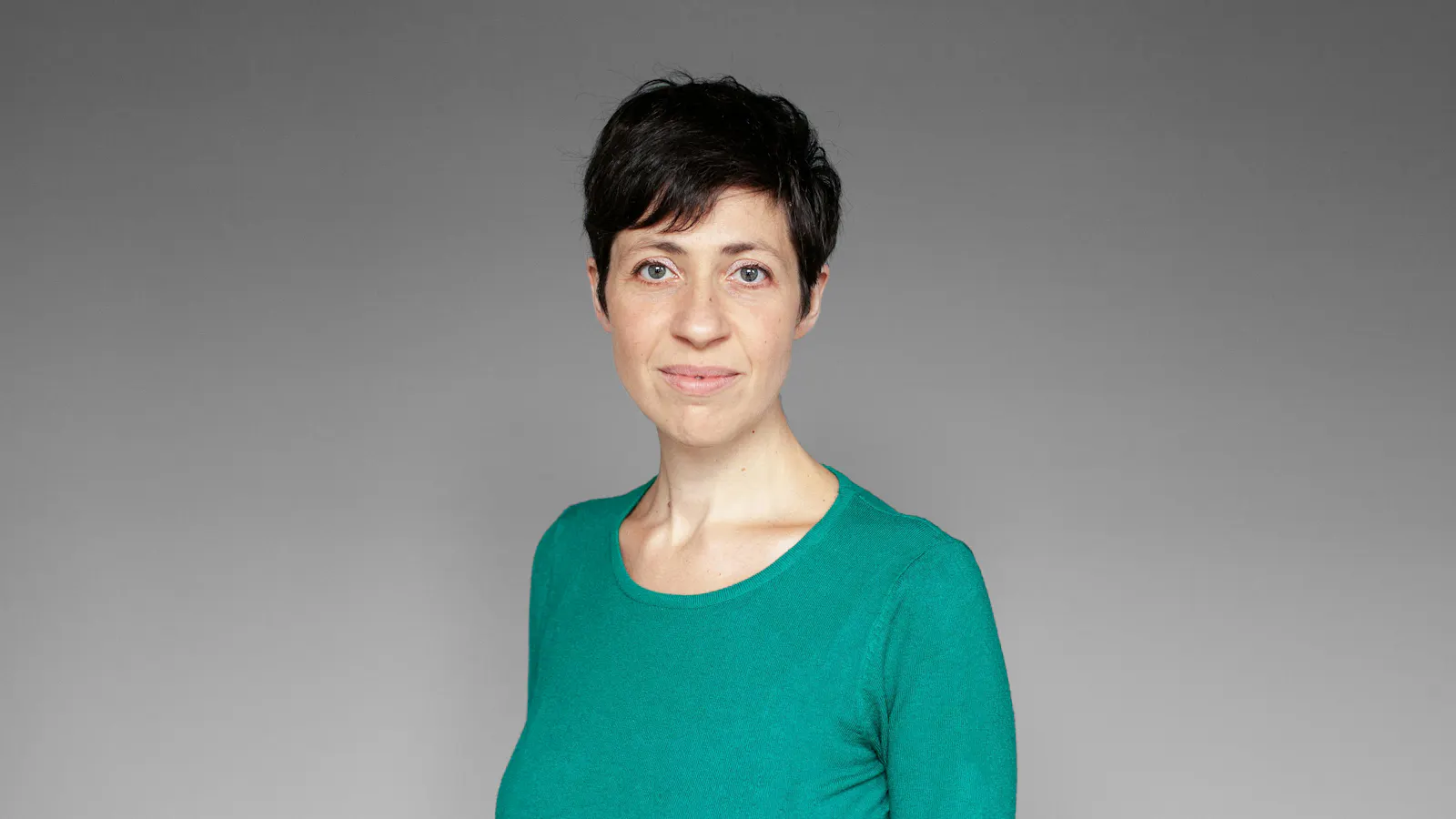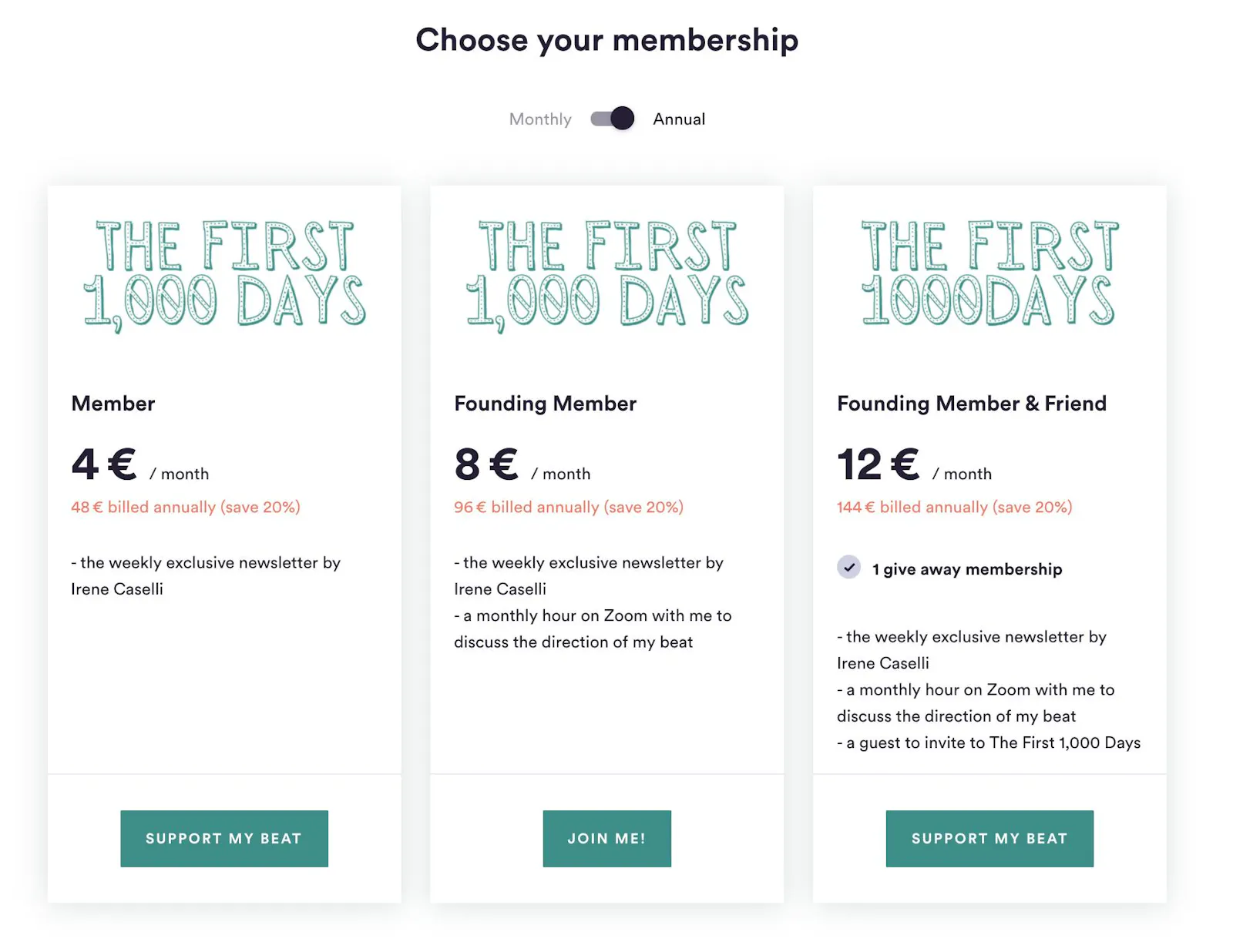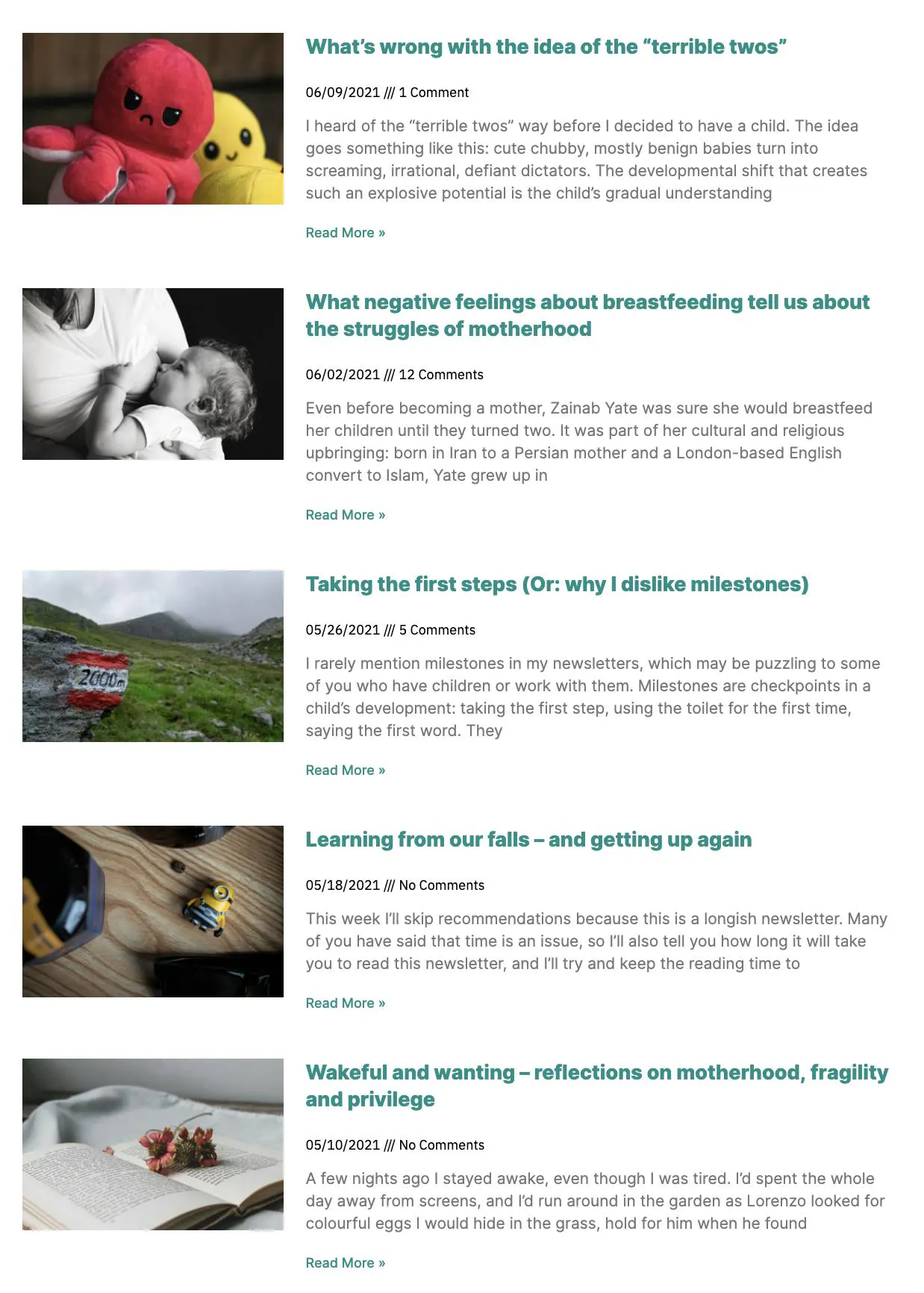How this newsletter writer got readers to pitch in on her project
From fact checking to pitching story ideas and proofreading, readers of The First 1000 Days (Öffnet in neuem Fenster) support the newsletter more than just financially

Irene Caselli holds monthly meetings with members to hear their editorial ideas. Photo: Lise Straatsma.
Irene Caselli brings together her passion and experience as a foreign correspondent and a mother to The First 1000 Days (Öffnet in neuem Fenster), her newsletter about the foundational time in a child’s brain development.
Caselli first launched her newsletter with the member-funded project The Correspondent and, when it closed at the end of 2020, Steady publisher Slow News (Öffnet in neuem Fenster) provided her a platform, logistical help and a like-minded community. Now Caselli uses Steady to manage her membership program, process her membership payments and involve her members more deeply in her reporting work. She was recently invited to take part in the City University of New York’s Entrepreneurial Journalism Creators Program (Öffnet in neuem Fenster) for her work on The First 1000 Days.
Steady: Something we love about your project is how your readers pitch in on your work. How do you get them on board?
Irene Caselli: One thing we were getting right at The Correspondent was a kind of thinking called “memberful routines (Öffnet in neuem Fenster)” – the ways in which we could engage with the audience from the very start, right at the time that we were coming up with story ideas, getting feedback and input from our members, readers, and then all across the other stages of the process.
Those “memberful routines” are still at the heart of my work today. I get tips from members about what they would like me to write about. I interview them, because sometimes they are experts, like pediatricians working on trauma, for example. Sometimes they become sources, or sometimes I get them to fact check my writing. And then the loop is closed when their comments on my articles sometimes spark new article ideas. When you interact with readers in this memberful way, they also get used to a different kind of journalism.
One member that offered me her proofreading services is someone that I'd never spoken to before. She doesn't work as an editor, she works at a library, but the comments she's been able to give to my stories have really improved my work. She’s an amazing editor.
You need to offer members different ways to get involved and support you. Anything from, “please share this story on social networks” to something more involved. Had I not asked, I would have not found her.
And you’ve brought memberful routines into your membership plans, too.
Yes, I hold monthly meetings on Zoom with my highest paying members [Founding members pay 8 EUR per month]. One of the perks of paying more is that you get more direct contact with me. These are usually very relaxed meetings, where I give a preview of what I'm working on and I hear their stories and reactions. Sometimes we just chat about things that are relevant to our everyday lives that are somehow relevant to The First 1000 Days as well.
During one of those meetings, there was a member who's a yoga instructor and works with kids as well. She was very interested in how we start moving and where our movement comes from. I had never thought about covering that specifically. So, I then started looking into it and I came across some really interesting research about how movement is very dependent on culture. In certain countries, for example, in India and Jamaica, parents are more likely to massage their kids and this can stimulate movement. This was an idea that was born from a member that then became a series.

The First 1000 Days offers three membership plans.
Tell us about the regular Member plan (4 EUR per month).
They get access to the newsletter as well as to my newsletter archives. Paying members get access to everything there.
All paying members also get access to the comment section below each article and there they’ll find conversations between members as well as experts in different fields who I invite to join in. As a member, you get to comment and ask questions directly to the experts. So there's a double purpose there: you get access to the experts and you can also be part of creating a community.
Every time I write something, there are at least three or four comments, which is a good start. Soon, I'm going to start hosting online events, where paying members will have the chance to be in the Zoom room with me to interview people. Non-paying newsletter subscribers will have the chance to stream it. The idea is to do the interviews together and I will act as a moderator or lead interviewer, alongside the members.

Breastfeeding, the "terrible twos", milestones and more: A selection of articles from The First 1000 Days.
What’s your strategy around which content is freely available versus what's only for paying members?
I would love to make my content freely available to all as a principle. But of course, starting up, it's very hard to make it all freely available, because then it's hard to make an argument in favour of supporting you. So what I'm doing right now is if someone can't afford to pay for the membership but they're interested, I can invite them to be a member. I have seven or eight members signed up this way. Otherwise, for my weekly newsletter, at least one issue per month is free to read and sometimes two. I usually try to choose topics that I think are more urgent, or that could have a wider appeal, because they will also do better on social networks. On the paid stories there’s a paywall, so they can’t be easily shared.
I've also written out the principle of my coverage (Öffnet in neuem Fenster) and why I’m writing this newsletter (Öffnet in neuem Fenster) – those I make available to all because I think it's important for everyone to get access to that. In the end, it's an exercise in transparency, which I think is very important, especially with newsletters, because people get them straight into their inbox. It's quite intimate, in a way. As a newsletter reader myself, I like to know who's on the other side. And I also think that more widely in terms of journalism, putting who you are out there also gives readers an extra tool to understand where you’re coming from and why they should trust you or not trust you about a certain issue.
Your newsletter is ad-free. Does that mean that paying members are your only means of income?
My aim is to make the newsletter my main source of income and I'm hoping that by the end of the year I’ll have about 300 paying members, which would give me the basis for my living costs. But at this point, the newsletter probably takes up half of my week and then the other half, I work as a freelance reporter on the same issues, but for bigger publications. I also do some mentorship with the Dart Center for Journalism and Trauma at Columbia University and with the Modern Slavery Unveiled (Öffnet in neuem Fenster) grant project. And I’m also a mum!
And what's been your experience using Steady so far?
What I really like about Steady is that it breaks up your annual membership payments into 12 months, so it gives you a more realistic outlook on how much you’re earning monthly instead of getting all the money at once and then in three months thinking, “what do I do now?” This helps me have a more realistic outlook on how much I can really dedicate to the newsletter versus other sources of income.
I have members from many different countries and we haven't had any payment issues with Steady. It’s simple and intuitive and the system is problem-free.
Keen to start your own newsletter? It only takes 5 minutes on Steady (Öffnet in neuem Fenster).


